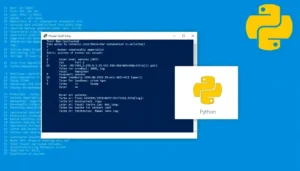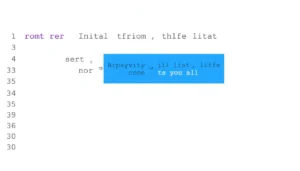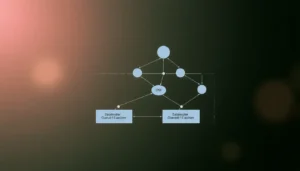India derivatives market: Sebi vs Jane Street Shaping a New Era
- THE MAG POST

- Aug 24
- 15 min read

India derivatives market dynamics are entering a pivotal crossroads as regulators tighten rules in response to aggressive high-frequency trading strategies. The unfolding Sebi–Jane Street debate is not merely a courtroom sparring match; it is a proving ground for how India intends to position itself as a global financial hub, balancing cutting-edge technology with robust market integrity. As the world watches, the India derivatives market could redefine how liquidity, risk, and innovation coexist on a single platform, shaping the trajectory of the country’s financial markets for years to come.
In this era of rapid technological advances and interconnected markets, the stakes are high. The regulatory response will influence not only how Indian markets evolve but also how foreign participants perceive and engage with them. The India derivatives market stands at a crossroads where policy choices will determine whether the nation becomes a magnet for global capital or a cautionary tale about overreach. The conversation is about structure, trust, and foresight—three pillars that will keep the India derivatives market competitive on the world stage.
India derivatives market dynamics are undergoing a seismic shift as regulators recalibrate the rules of the game, especially in the high-octane arena of derivatives trading where speed and strategy collide. The unfolding Sebi–Jane Street debate is not merely a courtroom sparring match; it is a proving ground for how India intends to position itself as a global financial hub, balancing cutting-edge technology with robust market integrity. As the world watches, the India derivatives market could redefine how liquidity, risk, and innovation coexist on a single platform, shaping the trajectory of the country’s financial markets for years to come.
India derivatives market dynamics reshaped by regulatory chess moves
In the India derivatives market, regulatory moves often come with a ripple effect that penetrates every layer of market activity. The ongoing Sebi actions against Jane Street, a prominent high-frequency trading firm, are being watched closely by exchanges, fund managers, and retail investors alike. This phase sees policymakers leaning into stronger surveillance, tighter controls on aggressive trading tactics, and a sharper focus on maintaining orderly markets. The result could be a more transparent environment, where sophisticated strategies evolve in ways that still protect participants from manipulation and systemic risk.
For practitioners, the India derivatives market now demands greater emphasis on compliance and risk governance. Firms that deploy complex algorithms must demonstrate that their activity aligns with the spirit of fair play and market integrity. The regulatory narrative is shifting—from chasing arbitrary profits to cultivating a robust framework that can withstand rapid technological advances. As such, the India derivatives market is moving toward clearer rules, more granular disclosures, and proactive monitoring that preempts abuses without stifling legitimate innovation.
From a macro perspective, the India derivatives market faces the dual challenge of encouraging global participation while safeguarding domestic investors. International firms bring liquidity and sophistication, but their presence heightens the need for consistent cross-border standards and interoperable surveillance systems. The question for the India derivatives market is not only about policing mischief but also about enabling a healthy ecosystem where new ideas can thrive within a predictable regulatory envelope. If executed well, these reforms could propel India into a leadership position in global derivatives trading.
The final outcome for the India derivatives market hinges on the ability of regulators to harmonize ambition with restraint. The Sebi–Jane Street scenario is less a singular incident and more a bellwether for how modern markets should be governed in a world of rapid tech-enabled trading. If the rules strike the right balance, India’s derivatives market can become a magnet for global capital, while preserving a level playing field for domestic participants. The stakes are high, but the potential rewards—stable liquidity, transparent price discovery, and sustained innovation—are equally compelling.
India derivatives market governance in practice
The India derivatives market governance framework is increasingly defined by proactive supervision, data-driven oversight, and a willingness to recalibrate as markets evolve. Regulators are prioritizing real-time monitoring, enhanced post-trade reconciliation, and clearer guidelines for algorithmic trading. The aim is to create a governance layer that can respond swiftly to new patterns of risk, without introducing friction that stalls legitimate strategy development. In this context, the India derivatives market benefits from a culture of continuous improvement, where feedback from market participants informs policy refinement in near real-time.
Market participants must adapt to more granular disclosures, including the rationale behind complex trades and the potential systemic implications of rapid order flow. This transparency is designed to deter covert manipulation and to help investors gauge the true risk profile of their positions. For the India derivatives market, governance is not a static rulebook but a living framework that evolves with market structure, technology, and global benchmarks. The result is a more resilient market that can absorb shocks while still rewarding innovation.
From the vantage point of exchanges, governance translates into robust surveillance systems, stricter controls on latency-optimized strategies, and collaborative enforcement with regulators. The India derivatives market thus becomes a stage where technology and policy intersect—requiring precision in implementation and clarity in communication. In the long run, consistent governance will reduce uncertainty, enabling more predictable participation by both domestic firms and international players seeking to deploy sophisticated trading strategies within a trusted regulatory perimeter.
Ultimately, India derivatives market governance should reflect a balanced philosophy: enforce strong safeguards against abuse while nurturing a climate where responsible innovation can flourish. If this balance holds, the country can attract high-quality liquidity, foster competitive pricing, and nurture a generation of market-makers who operate with integrity and foresight. The journey is ongoing, but the destination—an inclusive, resilient, and globally credible derivatives market—becomes clearer with each regulatory milestone.
Comparative insights: domestic rules vs global norms in the India derivatives market
Comparative insights reveal that the India derivatives market is aligning with global norms around risk controls, market surveillance, and fair access to liquidity. Domestic rules are being enhanced to mirror best practices observed in mature markets, while recognizing the unique dynamics of the Indian financial ecosystem. This alignment seeks to create a level playing field for participants, reduce information asymmetry, and ensure that price discovery remains transparent even as cross-border trading intensifies. The India derivatives market stands to gain from harmonization that eases the entry of global participants while preserving local market characteristics that drive domestic growth.
Differences remain, however, as regulatory bodies tailor measures to domestic market structure, including the peculiarities of Bank Nifty products and the particularities of local settlement systems. The India derivatives market benefits when policy-makers maintain flexibility to calibrate circuit breakers, margin requirements, and surveillance triggers in response to evolving trading patterns. The objective is not to replicate another jurisdiction but to adapt effective practices to India’s own risk profile and liquidity cycles, ensuring that the India derivatives market remains competitive and resilient in a global context.
For market watchers, these comparative insights provide a clearer view of how the India derivatives market can attract foreign investment while curbing the potential for abusive tactics. By embracing robust risk controls, transparent governance, and coherent cross-border cooperation, the India derivatives market can establish itself as a trusted hub for derivatives trading. In this environment, global players find a familiar regulatory language, reducing uncertainty and accelerating strategic decision-making about participation in Indian markets.
In sum, the India derivatives market’s path toward global parity involves careful, evidence-based policy choices that respect domestic realities while embracing international standards. This balanced approach will help sustain long-term growth, deepen liquidity, and enhance the integrity of price discovery—an outcome that benefits all participants in the India derivatives market and reinforces India’s standing on the world stage.
HFT, speed, and the ethics of intensity in the India derivatives market
Speed-based strategies have long been a hallmark of modern markets, and the India derivatives market is no exception. The Sebi–Jane Street scenario spotlights the tension between the need for rapid execution and the obligation to safeguard fair access to markets. As high-frequency traders push the envelope on latency and data processing, regulators must ensure that competitive advantages do not erode market integrity or disadvantage longer-term investors. In the India derivatives market, this balance is achieved through sophisticated surveillance, transparent rule interpretations, and well-designed testing environments for new strategies before they go live.
From a practical standpoint, the India derivatives market benefits when participants are clear about the boundaries of permissible activity. The industry can encourage innovation in algorithm design while mandating rigorous risk controls, including safeguards against unintended market impact and excessive order cancellations. This approach preserves the advantage of speed for legitimate traders but mitigates the risk of destabilizing market events that can ripple through the broader ecosystem. The India derivatives market thus advances as a space where technology and ethics co-evolve, rather than collide.
Ethical considerations in the India derivatives market also extend to data usage, privacy, and the potential for model-driven manipulation. Regulators and firms must collaborate to establish norms around data access, auditability, and the responsible deployment of machine-driven strategies. By fostering a culture of accountability, the India derivatives market can maintain competitive vigor without compromising investor confidence or market stability. In this way, speed remains a respected attribute, tethered to responsibility and transparency within the India derivatives market.
Looking ahead, the India derivatives market could set a precedent for how global markets manage the speed-versus-safety equation. If the regulatory framework in India evolves to clearly delineate safe windows for high-frequency activity, while preserving rigorous checks, it will become a model other jurisdictions may study. The India derivatives market, in embracing this balance, can attract sophisticated global participants who value a transparent, well-governed trading environment that rewards skill while protecting everyday investors. Such a reputation would be a competitive advantage for the India derivatives market in the 21st century.
Impacts of speed-based strategies on liquidity and price discovery in the India derivatives market
Speed-based strategies influence liquidity by adding depth to order books and enabling rapid price adjustment in response to new information in the India derivatives market. However, the same speed can distort true price discovery if it disproportionately amplifies momentary orders or creates unfair advantages for a subset of participants. Regulators are increasingly focused on ensuring that liquid markets remain accessible to a broad set of traders, not only those equipped with the fastest hardware. The India derivatives market benefits from calibrated latency controls and fair access requirements that keep liquidity flowing to the widest audience.
Price discovery in the India derivatives market hinges on reliable signals that reflect genuine supply and demand. When high-frequency activity dominates the narrative, ordinary investors may perceive markets as unpredictable or unfair. The regulatory response—clear rules, robust surveillance, and consistent enforcement—helps anchor price formation in reality, aligning it with economic fundamentals and investor expectations. This stabilizes the India derivatives market, encouraging participants to base trading decisions on sound analysis rather than reflexive speed advantages.
Moreover, the India derivatives market can leverage technology to enhance transparency around liquidity provision. By publishing real-time data on order flow, cancellation rates, and execution quality, exchanges can empower investors to make informed choices and to assess execution venues critically. In this sense, speed-based strategies can coexist with a transparent market architecture that rewards genuine information processing and disciplined risk management within the India derivatives market.
Ultimately, the India derivatives market stands to gain from a well-calibrated balance between speed and fairness. If regulators and market participants collaborate to ensure broad access, clear rules, and robust monitoring, liquidity will deepen and price discovery will become more resilient. The outcome is a more vibrant, trustworthy India derivatives market that attracts diverse participants while maintaining the integrity essential for long-term growth.
Regulatory crackdowns and their ripple effects on market structure
The crackdown phase in the India derivatives market sends a powerful signal to exchanges, brokers, and investors about the seriousness with which authorities intend to weed out abusive practices. As Sebi tightens norms around derivative trading, the structure of the market is poised to become more disciplined, with heightened risk controls and clearer lines of responsibility. The India derivatives market could experience a temporary reshaping of liquidity as participants adjust to new compliance expectations, but the long-run impact promises a more stable trading environment.
On the exchange front, regulatory crackdowns stimulate enhancements in surveillance capabilities, data analytics, and cross-border cooperation. This fosters a more coherent market ecosystem in the India derivatives market, where rules are consistently applied and enforcement is predictable. Market participants gain confidence knowing that enforcement is not arbitrary but grounded in transparent policies designed to protect all players, including smaller participants who previously faced information asymmetry and uneven access to resources in the India derivatives market.
For investors, the India derivatives market becomes more navigable when the rules are clear and consistently enforced. Transparency about what constitutes market abuse, how violations are detected, and the consequences of breaches translates into a safer trading environment. As a consequence, retail and institutional players alike may increase participation, drawn by the promise of fair competition and reliable price discovery in the India derivatives market. The regulatory crackdown, if well-executed, strengthens the market’s long-term appeal to a global audience.
Looking forward, ongoing crackdowns can catalyze systemic improvements across the India derivatives market. By embedding stronger governance, more frequent audits, and improved risk models, the market can withstand shocks and maintain orderly functioning even during periods of volatility. The net effect is a more robust India derivatives market that supports sustainable growth and reinforces India’s reputation as a disciplined, forward-looking financial hub.
Global perspective: how regulators worldwide view the India derivatives market crackdown
Regulators around the world are watching the India derivatives market crackdown with interest, recognizing the potential for scalable best practices that can inform global standards. The emphasis on transparency, risk-based surveillance, and proportionate enforcement resonates beyond borders, offering a template for other jurisdictions facing similar challenges with fast-moving trading strategies. The India derivatives market thus contributes to a global dialogue about how to balance innovation with integrity in an increasingly complex financial landscape.
From a policy standpoint, the India derivatives market crackdown demonstrates the importance of context-specific rulemaking. While universal principles matter, each market’s unique structure requires tailored approaches that address domestic liquidity profiles, settlement ecosystems, and investor behavior. In this sense, the India derivatives market becomes a learning laboratory, providing practical insights that can be adapted by other regulators seeking to modernize their own derivatives frameworks.
The broader implication is a more harmonized regulatory environment for derivatives trading, where cross-border cooperation and data-sharing enhance market resilience. The India derivatives market, by pioneering calibrated enforcement and transparent governance, may help shape a more stable and interconnected global financial system. This is the kind of leadership that the world seeks as markets evolve at machine speed, yet demand human judgment to preserve trust and fairness.
Ultimately, the India derivatives market crackdown could serve as a catalyst for a new era of collaboration among regulators, exchanges, and market participants. If the lessons learned here are codified into practical guidelines, they can help mitigate risk, improve market quality, and foster a healthier ecosystem for derivatives trading on a global scale.
Market liquidity, risk management, and the India derivatives market in a new era
Liquidity, the lifeblood of any derivatives market, stands at the center of the India derivatives market’s evolving structure. The reforms sparked by Sebi’s actions are shaping how liquidity is sourced, managed, and measured, with an emphasis on depth, resilience, and access. In a more disciplined regime, market makers, brokers, and institutional players collaborate to ensure that bid-ask spreads stay narrow under normal conditions while still expanding to accommodate larger trades during volatility. The India derivatives market thus moves toward a more robust and accessible liquidity profile that benefits all participants.
Risk management is the natural companion to liquidity, and it is undergoing a thoughtful recalibration in the India derivatives market. Banks and trading desks are refining margin practices, stress-testing portfolios under adverse scenarios, and investing in advanced analytics to anticipate potential shocks. This shift enhances the ability of institutions to absorb losses without triggering cascading liquidity problems that could ripple through the market. The India derivatives market benefits from a more disciplined approach to risk that protects both large and small players alike.
Market structure adjustments, including changes to product design and exchange rules, contribute to a more stable trading environment in the India derivatives market. By aligning contract specifications, settlement processes, and margin requirements with observed market behavior, regulators and exchanges reduce the likelihood of abrupt dislocations. Participants gain clarity about product features, enabling more precise hedging strategies and better risk-adjusted decision-making in the India derivatives market.
Over time, the India derivatives market could attract a broader set of participants, including global asset managers and sophisticated local investors, drawn by deeper liquidity and predictable governance. This evolution promises more competitive pricing, more accurate risk pricing, and a healthier feedback loop between liquidity provision and risk management. The ultimate gain is a more resilient India derivatives market capable of supporting sustained growth even amid periods of stress and rapid technological change.
Investor confidence, education, and access in the India derivatives market
Investor confidence hinges on transparent settlement, clear product knowledge, and reliable market signals. In the India derivatives market, emphasis on disclosure and investor education helps demystify complex instruments like Bank Nifty futures and options, encouraging broader participation from retail investors who have traditionally been wary of derivatives. By providing accessible resources, clear risk disclosures, and intuitive explanations of hedging strategies, the India derivatives market can empower investors to make informed decisions and better align their portfolios with their risk tolerance.
Access to markets is another critical dimension. The India derivatives market benefits from avenues that lower barriers to entry for smaller traders and regional participants, while preserving safeguards against malpractice. Initiatives such as tiered margin requirements, educational programs, and intuitive trading interfaces can democratize participation without compromising stability. The India derivatives market thus becomes more inclusive, inviting a wider spectrum of voices to contribute to liquidity and price discovery.
Educational efforts should extend beyond product mechanics to cover the broader market environment: how to interpret volatility, how to assess liquidity risk, and how to manage leverage prudently. By shaping a well-informed investor base, the India derivatives market reduces the likelihood of impulsive or ill-considered trades that could destabilize markets during periods of volatility. A more knowledgeable investor community strengthens overall market health and fosters long-term trust in the India derivatives market.
Finally, accessibility and education reinforce the global relevance of the India derivatives market. When investors around the world see a transparent, well-governed, and inclusive market, they are more likely to participate and contribute to depth and resilience. This virtuous cycle elevates the India derivatives market from a national concern to a respected international venue for sophisticated derivatives trading and risk management, signaling a future where India stands as a prominent node in the global financial system.
Investor education as a pillar of the India derivatives market ecosystem
Effective investor education lays a strong foundation for the India derivatives market by clarifying product complexity, risk mechanics, and the role of regulators. Education programs, webinars, and easily accessible resources can demystify derivative instruments, helping both novice and seasoned investors understand how these tools can be used for hedging and growth. In the India derivatives market, informed participants contribute to more stable price discovery and more rational trading behavior during periods of market stress.
Additionally, education should highlight the importance of responsible leverage, margin calls, and risk controls. By teaching investors how to read risk proxies, interpret market signals, and implement disciplined hedging strategies, the India derivatives market fosters prudent participation. This empowerment reduces the likelihood of reckless bets that could harm the market’s overall integrity and stability.
Education initiatives must also address the ethical dimensions of derivatives trading, including fair access, transparency, and the societal impact of sophisticated strategies. The India derivatives market benefits when participants understand not only the mechanics but also the broader implications of their actions within the financial system. A well-informed investor base strengthens trust and confidence across all market segments, enhancing the India derivatives market’s reputation globally.
Ultimately, investor education is not a one-off project but an ongoing commitment. As the India derivatives market evolves with new products and technologies, continuous learning programs will be essential to maintain a knowledgeable and engaged investor community. This commitment to education supports sustainable growth, strengthens market discipline, and sustains the India derivatives market’s stature in global finance.
The Final Take: India derivatives market in a transformative era
In a transformative era for the India derivatives market, the confluence of regulatory reform, technological innovation, and heightened market scrutiny is rewriting the rules of engagement for all participants. The Sebi–Jane Street case stands as a defining moment, signaling a new era where governance, ethics, and speed must coexist without compromising the market’s integrity. As the dust settles, the India derivatives market will likely emerge healthier, more transparent, and better prepared to attract global capital while protecting domestic investors from manipulation or excessive risk.
The key takeaway is that the India derivatives market can harmonize ambitious growth with disciplined risk management. By embracing robust surveillance, standardized product structures, and a culture of accountability, the market builds resilience against shocks and creates a trusted platform for price discovery. The transformation is not instantaneous, but the trajectory is clear: the India derivatives market aspires to be a premier global hub for derivatives trading—rooted in integrity, innovation, and inclusive participation.
For practitioners, students, and policy watchers, the India derivatives market offers a rich case study in modern market design. It demonstrates how regulatory intent, when paired with industry collaboration, can unlock long-term value without stifling ingenuity. The long arc points toward deeper liquidity, more accurate risk pricing, and stronger investor confidence, all anchored by a transparent framework that prioritizes fairness and sustainability in the India derivatives market.
Key takeaways for the India derivatives market going forward
First, a transparent, consistent regulatory framework will be critical to sustaining trust in the India derivatives market. Second, technology-enabled surveillance must advance in step with trading innovation to protect market integrity. Third, inclusive education and accessible market access will broaden participation and liquidity in the India derivatives market. Fourth, cross-border cooperation and global best practices can accelerate the maturation of the India derivatives market while preserving its unique strengths. Fifth, the ultimate aim is to position India as a credible, resilient, and vibrant global derivatives hub within the evolving financial ecosystem of the 21st century.
As the India derivatives market evolves, stakeholders should remain vigilant about unintended consequences and remain committed to continuous improvement. The balancing act between innovation and protection will define the market’s success, and the India derivatives market has the potential to set new standards for governance, transparency, and investor empowerment on a global stage.
The journey ahead holds both complexity and promise for the India derivatives market. With thoughtful policy, disciplined execution, and a cooperative market culture, the path forward can deliver a more robust, inclusive, and globally respected derivatives marketplace in India.
Aspect | Details |
Parties | Sebi (regulator) vs Jane Street (HFT firm); global market participants watch closely |
Core Issue | Alleged manipulation in Bank Nifty derivatives through aggressive trading strategies |
Potential Impact | Regulatory clarity, market integrity, and possible restructuring of liquidity dynamics |
Regulatory Implications | Stricter surveillance, risk controls, and policy alignment with global norms |
From our network :
Mastering Matplotlib: Adding Major & Minor Ticks to Bar Charts for Enhanced Readability
Dynamically Generate DB2 GRANT Statements from SYSCAT.TABAUTH
World’s Largest Biohybrid Robot Hand: A Breakthrough in Robotics
Scientists Discover Seven Thousand Year Old Mummies in Sahara Desert
Swimmer in a River: RELATIVE AND ABSOLUTE MOTION NUMERICAL PROBLEMS






















































Comments